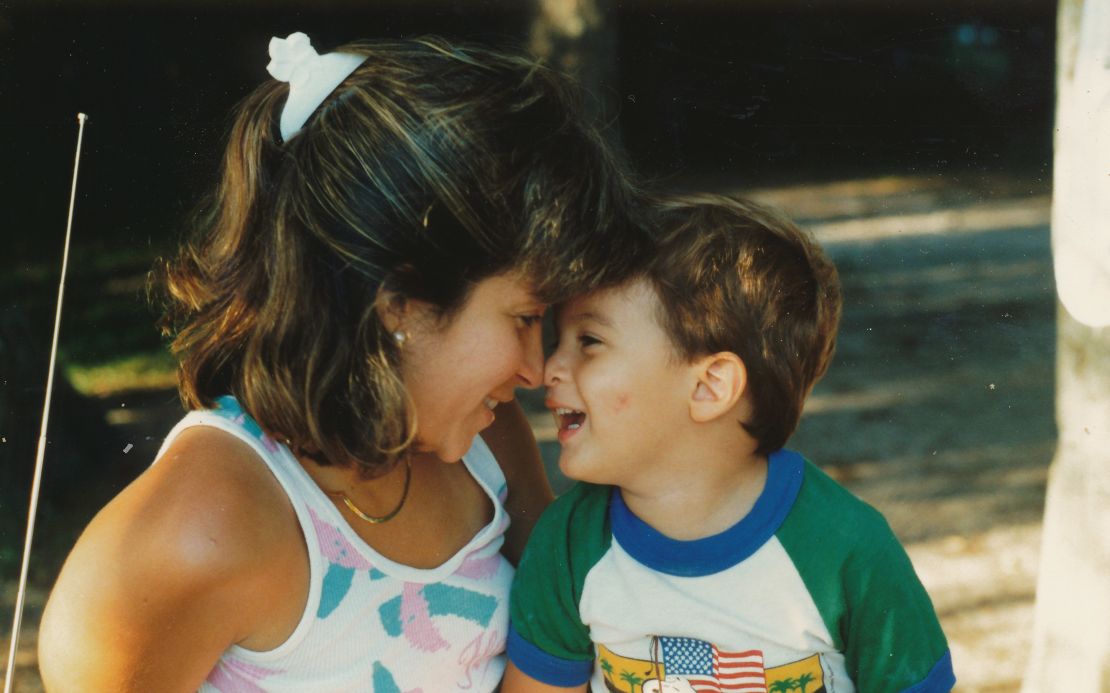Story highlights
Dr. Joel Salinas has mirror-touch synesthesia
He says he can feel the pain of his patients
Dr. Joel Salinas was in medical school the first time he saw a man die.
“Someone is doing compressions … and as this is going on, I’m feeling the compressions on my chest as if it were happening on my body,” Salinas said. “As he died, I felt this kind of hollow slipping sensation … and after that I ran to the bathroom and threw up.”
Salinas, a neurologist at Massachusetts General Hospital, has mirror-touch synesthesia, a neurological trait that affects two out of 100 people. It causes him to feel the emotional and physical sensations of others.
“It’s essentially a glitch in my brain’s wiring where I feel physically on my body what I see other people feeling. For example, if you are gasping for air, I feel like I’m gasping for air. If you’re having a panic attack, I feel like I’m having a panic attack,” he said.
Salinas sees it as a heightened form of empathy. The parts of the brain that are tied to “mirroring” the feelings of others are larger and more active than people without it, he said.
The first case of mirror-touch synesthesia was reported in 2005.
“A lot has been discovered using structural MRI imaging, functional MRI imaging and a lot of other measures of how the brain cells work and how the brain waves respond to the world around us,” he said.
‘Something different or odd about me’
Growing up, Salinas always sensed that he was a little different.
“I remember watching cartoons as a kid. … I’d watch Wile E. Coyote, and if he got hit by a truck, I got hit by a truck,” he said. “Even in high school, I saw a lot of fights, and that was tough.”

It wasn’t until his first year of medical school that he learned about synesthesia. Later, he was tested for mirror-touch and confirmed he had it.
“Growing up, I always felt motivated to help relieve some of that suffering. Not only because it helped them but because it helped me, too,” he said. “Mirror-touch synesthesia was one of the things that actually drew me into medicine and has helped shape me as a doctor.”
Bob McGrath is one of his patients.
“He is very much in tune with how you’re feeling and how those feelings change over time. When I was in his office for the first time, he said, ‘How are you?’ and I said, ‘I’m OK, but I’m anxious.’ His response was, ‘I know,’ ” McGrath recalled.
When McGrath came to see Salinas, one of his medications was causing body tremors and some cognitive impairment. Salinas was able to pinpoint which medicine was causing the side effects.
“Knowing that I was perhaps a bit nervous on the other end … he called me three times one day because he couldn’t get a hold of me. I thought that was extraordinary for a doctor to do that,” McGrath said.
Not everyone with mirror-touch synesthesia has been able to harness it in such a positive way.
“I think of myself as one of the lucky ones,” Salinas said. “There’s one woman with mirror-touch synesthesia who essentially has become a shut-in because she just avoids people altogether. … Other mirror-touch synesthetes, even though they’re not housebound, require long periods of isolation just to kind of offset these synesthetic experiences, which can be overwhelming.”
Salinas said he uses mindfulness to stay focused, especially around patients who are suffering from their own injuries and disorders.
“I have to ground myself in my own physical body. … ‘OK, there’s nothing going terrible with me, but there is something going on with this person. Now, let me do something to help them,’ ” he said.
Recently, Salinas was in the hospital and called in to consult a woman with cerebral palsy who could not speak. She had become combative with the nurses, and Salinas was asked to recommend a medication to sedate her.
Join the conversation
“I walk into her room, and I felt mirrored in my own body … the rising and falling of a chest that’s moving faster than my own chest … and the feeling of my shoulder muscles activating and kind of contracting up and down. Clinically, to me, that means someone is having difficulty breathing,” he said.
Salinas recommended an imaging study and found out she had blood clots in her lungs.
“She wasn’t being agitated because she was angry or even necessarily delirious. She was literally fighting for air. Without my mirror-touch synesthesia, I don’t think I would have necessarily picked up on this as early as I did.”
Salinas has written about his experiences in a new book, “Mirror Touch: Notes From a Doctor Who Can Feel Your Pain.”
“I think empathy is paramount to being able to take care of your patients,” he said. “Because I get to be a part of some of this pain and suffering, the patients get to be a little less alone … that means a lot in medicine.”




